


Experiments with magnets and our surroundings
Magnetic Art
Magnets and electromagnets are being used by several individuals as a new medium for their artistic work. Below are some links to their sites.
Morpho Towers
This first display called "Morpho Towers - Two Standing Spirals" uses ferrofluid as the medium that interacts with magnetic fields. The artists for this are Sachiko Kodama and Yasushi Miyajima.
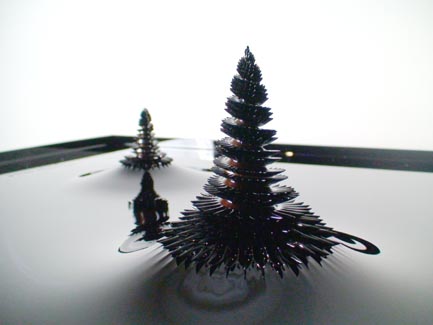
The above is a very imaginative usage of ferrofluid, and when put to music,
can be a unique piece of art.
The other creative part is the conical shape of the steel with a spiral groove
used to create the fields needed to make the fluid flow upward and spike
outward. At the end of the video, there are
other videos you can view.
Protrude, Flow
This second display called "Protrude, Flow" also uses ferrofluid, but it looks like there are two electromagnets, one above the other, so the fluid can interact with both. The artists for this are Sachiko Kodama and Minako Takeno.

A site by Martin Frey also using ferrofluid. Check his video, too.
Deterministic Nonperiodic Flow
The following is a very creative term project by Eva Schindling and Daniel Wilson, at the MSc. ‘Art & Technology’ Program at Göteborg University and Chalmers University of Technology under Mats Nordahl. http://dnf.evsc.net/
Take the time to read about the motivation, construction, installation, and especially the simulation pages to this site, and the other projects on Eva's site.
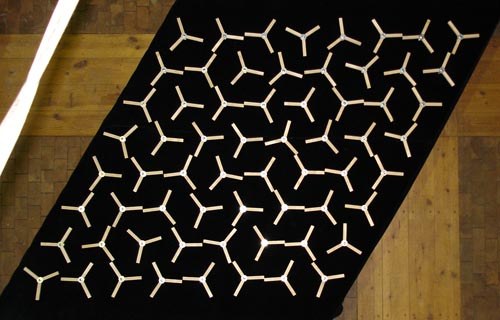
The basic design is similar to the
toy called the Magnetron seen here

Bruce Gray
Bruce Gray has created several sculptures using magnets in a
different way. You can see several of his pieces of work at his web site
here: http://www.brucegray.com/htmlfolder/magneticsculptures.html
These are similar in concept to this design of a calendar from the Museum
of Modern Art that also uses magnets to create a tension in the string.
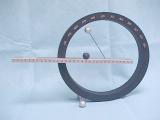
Sisyphus
Since motors use electromagnets, here is an interesting way to
make a sand sculpture by moving a steel ball around on a plate with sand to
create repeating
patterns. This is found at the Technorama
in the city of Oberwinterthur, Switzerland, and at the Science
Museum in St Paul, MN.
This is called Sisyphus.
Sisyphus was a mythological
Greek king who was punished for his deceitfulness by being forced to roll a
large rock up a hill, only to have it roll back down, repeating this laborious,
futile task for all of eternity.

Also check out their page about electricity and magnetism.
The creator of this active sand sculpture is Bruce Shapiro. Check his site for a lot of other unusual and fascinating projects he has developed.
Wooden Mirror
Here's a most unusual idea, a Wooden
Mirror created by Danny
Rozin. The individual squares (like pixels) are made of wood, but are tilted
downward or upward (using motors, of course) in order to change the brightness
of each pixel seen by the person in front of the mirror, by changing the amount
of light reflected off of each square. Check the video
on this! Really cool! Also check the bitforms
gallery.
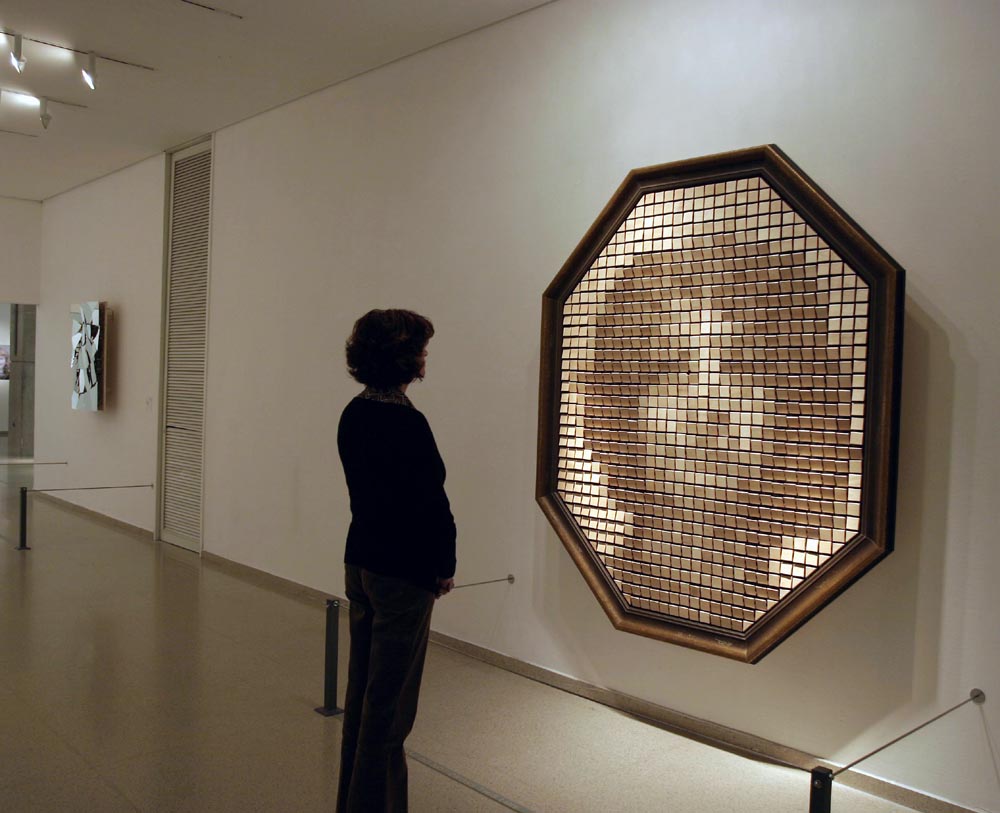
Magnetic Sculpture Kits
There are hundreds of magnetic sculpture kits available from several sites. They use various steel shapes and colors that stick to two magnets in the base and to each other. Here are some sources and other interesting links. Check them out!
http://www.giftsforprofessionals.com/desk-accessories-magnetic-sculptures.html
http://www.dartmouth.edu/~izapa/M-11.pdf
Magnetic Sculpture
Here is something I came up with that has been fun to
play with. I used a large steel ball bearing, about 2" in
diameter. It is attached to a base using a couple of 3/4" ring
magnets. I then stick various size steel balls to it using one or more
1/4" tube magnets. The tube magnets can be easily moved around on the
surface of the big ball. As you can see in the second photo, you can even
connect additional layers of spheres, almost like a futuristic city connected by
tubes. Other types of structures can be seen here.
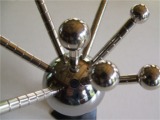

How do they make steel balls? Check this out: https://www.youtube.com/watch?v=afEGx4jpFzo
Robert Hodgin
Robert Hodgin does some amazing work.
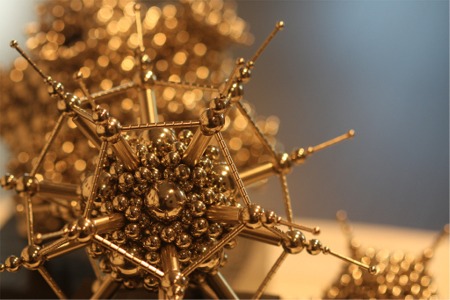
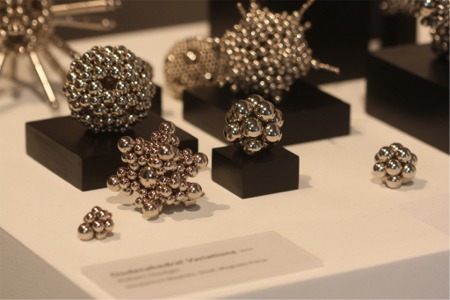
At this site: http://www.flickr.com/photos/flight404/sets/72157616704023547/
are fantastic sculptures of his using spherical magnets, cylindrical magnets,
steel balls, and a super imagination!
Magnetic Rag, Scot Joplin
Scott Joplin wrote a piece of ragtime music he called "Magnetic Rag". I'm not sure why "magnetic" is in the title, but it is a fun piece to listen to. It was the last rag he published in his lifetime, in 1914. Some links of interest:
http://en.wikipedia.org/wiki/Magnetic_Rag
http://www.mutopiaproject.org/cgibin/piece-info.cgi?id=441
http://www.youtube.com/watch?v=-IyLwLe6rB8
- very fun with a LEGO train. Titled with SanteFe Rag, but it's really the
Magnetic Rag that is being played.
Pe Lang
Pe Lang, from Switzerland, has been creating some very unique, imaginative, dynamic sculptures utilizing electromagnets, ferrofluid, permanent magnets and motors. You need to visit his web site to see photos and videos of his work. I was very impressed with his ideas and the meticulous execution of those ideas.
Necklaces and Magnets
This is similar to something I saw at the Exploratorium in San Francisco. I have 6 large, 12" square magnets, and several colored necklace chains that will stick to the face of the magnets. Patterns and pictures can be created with that, and the necklaces will not fall off!
1. The magnets were from MagnetKing, item PSA60-35, already cut into 12"x12" squares by them. These cost about $11.31 each if you buy 1 to 9; only $7.04 if you buy 10 to 24, … I bought 6.
Keep your eyes open for new and unusual artistic displays involving magnets, electromagnets, motors, etc.